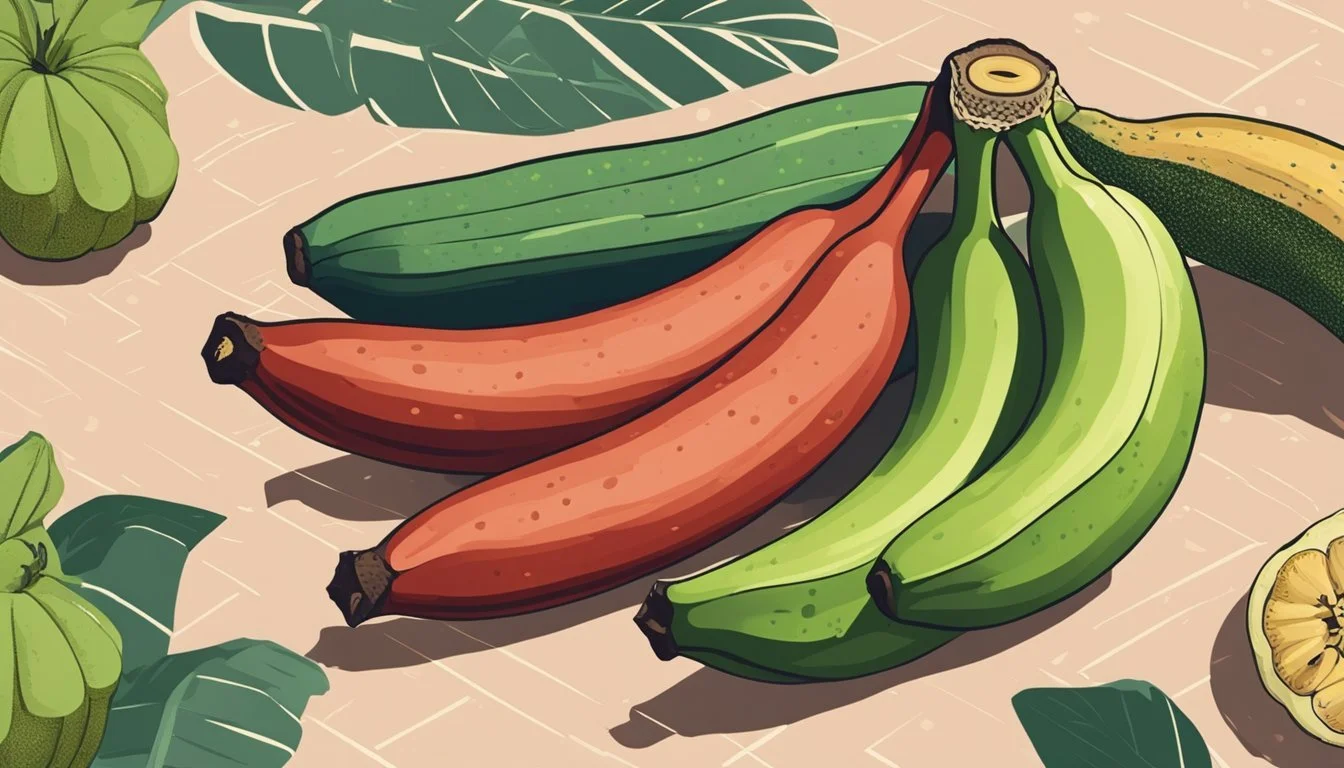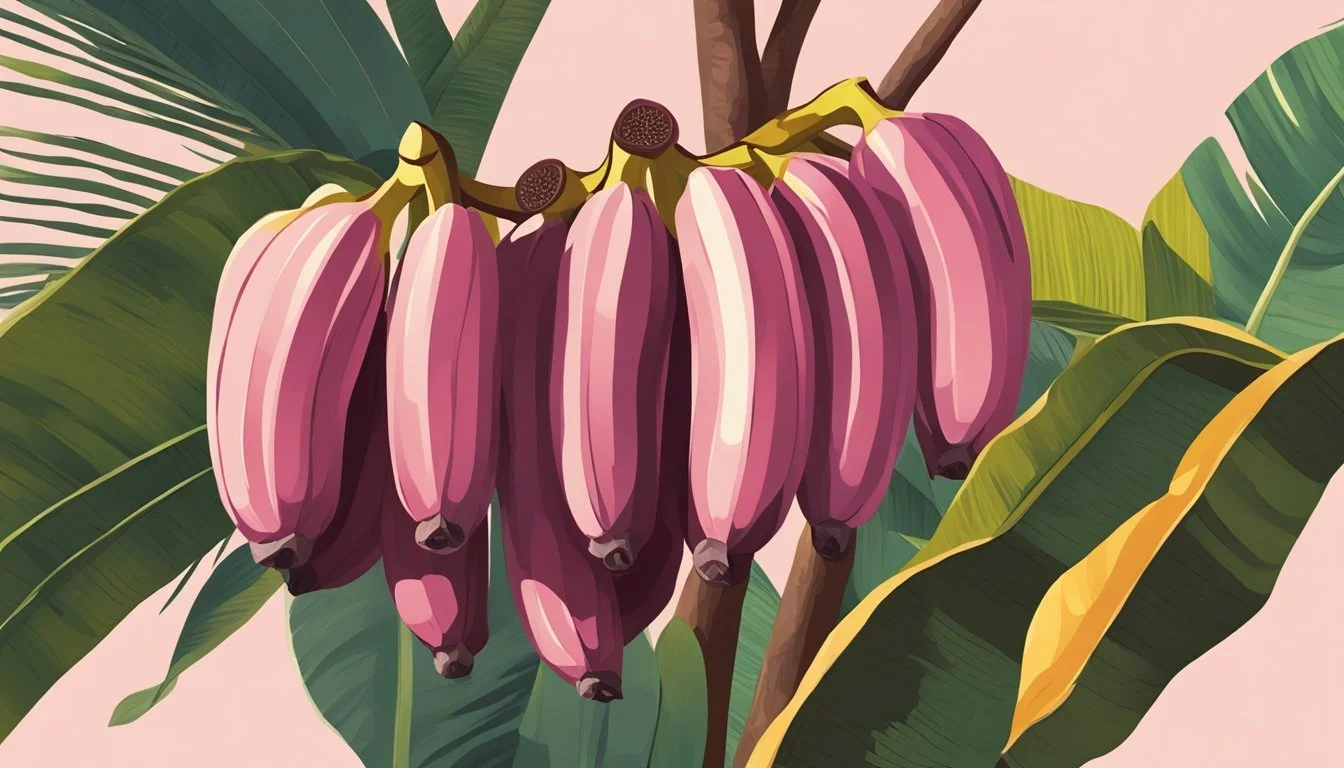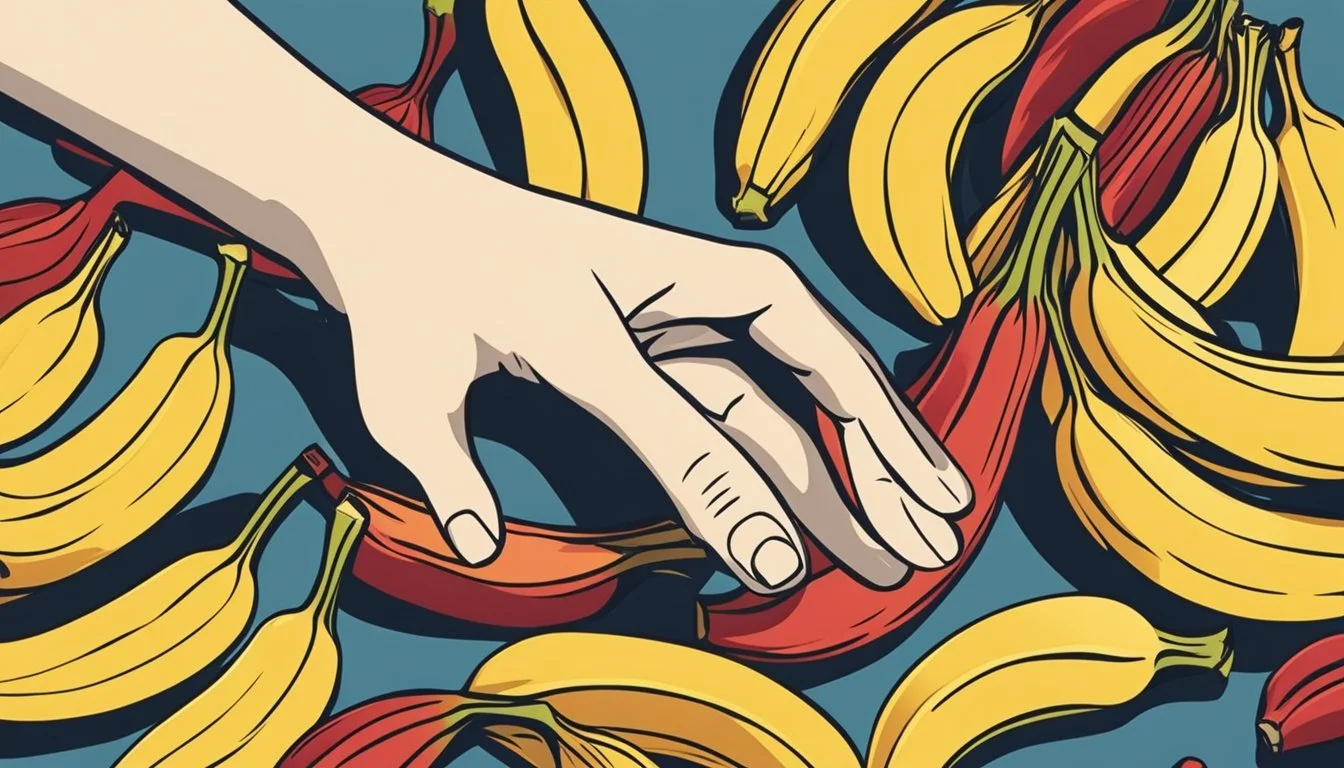How to Tell If a Red Banana is Ripe
Your Ultimate Ripeness Indicator Guide
Determining the ripeness of a red banana is key to enjoying its full flavor and nutritional benefits. As with their yellow counterparts, red bananas signal their readiness in subtle shifts in texture and color. They start off with a vivid maroon hue and gradually adopt a deeper, almost purplish shade. Unlike the bright yellow of a ripe Cavendish banana, a ripe red banana often displays a lightening of color along with the emergence of brown spots. The spots are visual cues indicating the sugars have matured inside the fruit, enhancing its sweetness.
The tactile feedback of a red banana can also guide consumers. When pressing gently on its skin, a ripe red banana will yield slightly to pressure. This softness suggests the inside flesh has developed its characteristic creaminess, which is ideal for consumption. In contrast, an unripe banana feels notably harder. A sweet, fruity aroma emanating from the fruit is another indication of ripeness, though it is a more subtle trait in red bananas than in their yellow relatives.
Key Takeaways
Red bananas change from maroon to purplish with yellow hints as they ripen.
Ripe red bananas give slightly under pressure and have a creamy texture.
A delicate sweet aroma suggests a red banana has reached optimal ripeness.
Identifying Ripe Red Bananas
To select the best red bananas for consumption, one must assess coloration, texture, and aroma, which are clear indicators of ripeness.
Color and Skin Changes
The skin of a ripe red banana will showcase a dark maroon to deep crimson hue. As they mature, any green tinge fades, indicating that they're nearing optimal ripeness. Small brown spots on the surface are also signs of a banana that is sweet and ready to eat. However, they should not be confused with black spotting which may indicate overripeness or spoilage.
Ripe Color Indicators: Deep Crimson or Maroon
Illustrative Signs of Overripeness: Black Spots
Texture and Firmness
A ripe red banana will yield to gentle pressure, indicating softness without being mushy. If the banana feels firm but with a slight give, it is at the stage of perfect ripeness for consumption.
Optimal Texture: Firm yet slightly yielding
Overripe Texture: Too soft and mushy
Aroma and Taste
One should conduct a smell test—ripe red bananas emit a sweet aroma. A lack of smell could indicate under-ripeness, while an overly pungent odor might point to decay. For taste, a perfectly ripe red banana will possess a sweet flavor that is richer than that of its yellow counterpart.
Expected Aroma: Sweet and easily noticeable
Flavor Profile: Rich and sweet
The Stages of Red Banana Ripeness
Identifying the ripeness of a red banana involves observing changes in its color, texture, and aroma over time. The transformation from inedible green to delectable ripe fruit occurs in distinct stages.
From Green to Yellow
When a red banana begins its ripening process, it transitions from a green shade to more yellow tones. Initially, green indicates that the banana is not yet ripe and may taste starchy and unappealing. As ripeness progresses, undertones of yellow start to appear, especially near the ends of the banana. The fruit becomes softer and gradually approaches the ideal consistency for consumption, moving beyond the firm stiffness of its unripe state.
Green: Hard, not ripe.
Yellow: Softening, ripening begins.
Spots and Sweetness
As the red banana continues to ripen, small brown spots or speckles emerge on the skin, a key indicator of sweetness. A fully ripened red banana will display a dark maroon or purple skin, laden with spots. These markings are a natural result of the sugars increasing within the fruit, enhancing its flavor profile. The presence of spots also correlates with a more yielding firmness, indicative of peak ripeness.
Spotted: Sign of increased sweetness.
Firmness: Slight give under gentle pressure, ready to eat.
Overripe Characteristics
Once past the stage of optimal ripeness, red bananas exhibit overripe characteristics. The skin's color shifts from vibrant dark tones to a duller hue, often accompanied by excessive browning. Overripe bananas feel too soft and might even become mushy. While overripe red bananas may not be ideal for eating fresh, they can still be used in cooking or baking where a smoother texture and intense sweetness are desired.
Browning: Excessive spotting and darkening of the skin.
Mushy: Too soft, indicates overripeness; can be used for baking.
Comparing Red and Yellow Bananas
Red and yellow bananas, while similar in shape and genetic makeup, exhibit distinct variances in color, taste, texture, and nutritional content that are crucial for consumers to understand.
Color Variation and Significance
Red Bananas:
Ripe fruits exhibit a deep red to purple skin color.
The absence of green hues signals readiness to eat.
Yellow Bananas (Cavendish):
A bright yellow skin often sprinkled with small brown spots indicates ripeness.
Green skin suggests the banana is yet to mature.
The color of these bananas not only differentiates the two in appearance but also helps in determining their ripeness and potential sweetness.
Texture and Flavor Differences
Red Bananas:
A ripe red banana feels soft yet firm to touch and should yield slightly under gentle pressure.
They are known for their creamy texture and a sweet flavor that hints at raspberry.
Yellow Bananas:
Ideal ripe yellow bananas exhibit a firm but not hard texture.
The taste of ripe yellow bananas is universally recognized as sweet, with a pure banana flavor.
Both varieties soften as they ripen, but their textures remain distinctive. Red bananas are generally creamier than the more firm yellow Cavendish bananas.
Nutritional Value Contrast
Red Bananas:
They are rich in beta-carotene, giving them their red hue, which the body converts to vitamin A.
They have a higher vitamin C content than yellow bananas.
Yellow Bananas (Cavendish):
While lower in vitamin C compared to red bananas, they provide ample potassium and vitamin B6.
They also offer a good amount of fiber and antioxidants.
The nutritional profiles of red and yellow bananas compliment each other well, each offering a unique set of vitamins and minerals to the diet.
Ripening Process Explained
The transformation of a red banana from firm and tart to soft and sweet can be influenced by several factors. Understanding the ripening process is crucial to achieving perfectly ripe bananas.
Natural Ripening at Room Temperature
Red bananas ripen naturally at room temperature. The process involves the release of ethylene gas, a natural plant hormone which fruits produce during the ripening process. As bananas mature, they transition from green to a deep red or purple color and develop a sweeter taste. Typically, a red banana may take several days to ripen fully at room temperature.
Monitor the color: A deep red or purple hue signifies ripeness.
Test firmness: Gently press the banana; if it yields slightly, it's ripe.
Accelerating Ripening with Ethylene
The ripening of red bananas can be speed up by expediting ethylene exposure. Ethylene gas stimulates the ripening process when bananas are confined in a closed space like a paper bag. This practice intensifies the ethylene concentration around the fruit:
Place bananas in a paper bag with an ethylene-producing fruit, like an apple or tomato.
Seal the bag to trap the gas and check daily for ripeness.
Impact of Temperature Levels
Temperature levels significantly affect the ripening of red bananas. Warmer temperatures tend to hasten the process, while cooler temperatures slow it down.
Room temperature (about 68°F or 20°C) is ideal for even ripening.
Storing bananas in a refrigerator will slow ripening, preserving fresh bananas longer.
Understanding these factors ensures one can enjoy ripe bananas at their peak flavor and texture.
Handling and Storage Tips
To ensure your red bananas maintain their freshness and flavor, proper handling and storage are crucial. The following tips are designed to help you maximize longevity and prevent premature ripening or spoilage.
Best Practices for Longer Freshness
For optimal freshness, red bananas should be stored at room temperature until they reach the desired ripeness. Keeping them in a well-ventilated area away from direct sunlight and heat sources can prevent over-ripening. Once ripe, you can place them in the refrigerator to slow down the ripening process. The skin may darken, but the fruit inside will remain unchanged for a few more days. To prevent bruising, store them separately from other fruits and vegetables.
Room Temperature: Best for unripe to partially ripe bananas.
Refrigeration: Ripe bananas can last longer in the fridge.
Signs to Refrigerate or Freeze
When red bananas display a deep crimson skin with black spots, which signals full ripeness, they're ready for refrigeration. This can extend their edibility for several days. If bananas become too ripe for your liking but you're not ready to consume them, consider freezing them for use in smoothies or banana bread. Peel the bananas, place them in a plastic bag, and store them in the freezer.
Refrigerate: Once fully ripe with black spots.
Freeze: Overripe bananas for longer storage.
Preventing Over-Ripening
To prevent red bananas from over-ripening, one can store them in a paper bag with an ethylene absorber to absorb the gas that accelerates ripening. Check the bananas regularly and use them once they reach the peak of ripeness. Overripe bananas have a high starch content, which makes them perfect for cooking or baking.
Paper Bag: Slows down the ripening process.
Usage: Overripe bananas are ideal for baking or cooking.
Using these storage and handling guidelines can help maintain the quality and taste of your red bananas, ensuring they're just right when you're ready to enjoy them.
Using Red Bananas in Cooking
Red bananas, when ripe, offer a creamy texture and a sweet aroma, making them an exceptional choice for various culinary applications, from baked goods to grilled delights.
Baking with Ripe Red Bananas
Ripe red bananas can elevate baking recipes to a new level of flavor and moisture. They are an excellent choice for banana bread and muffins due to their rich sweetness.
Banana Bread: For a moist loaf, integrate mashed ripe red bananas into your favorite recipe.
Muffins: Fold diced ripe red bananas into the batter to add a burst of flavor and color.
Enhancing traditional recipes with ripe red bananas not only adds a tropical twist but also a nutritional boost.
Savory Dishes and Grilling
Ripe red bananas can also be incorporated into savory dishes. Their sweetness complements the smokiness of grilling perfectly.
Grilled Red Bananas: Slice ripe bananas lengthwise and grill until caramelized. Serve as a side or topping for meats.
Incorporation into Savory Dishes: Ripe red bananas can be mashed and mixed into patties or used to create a sweet-and-savory salsa.
By using ripe red bananas, one can add a unique flavor profile to savory dishes that will surprise and delight guests.
Smoothies and Fresh Snacks
For a healthful snack or a refreshing drink, ripe red bananas are second to none.
Smoothies: Blend ripe bananas with other fruits, ice, and your choice of milk or juice for a creamy, nutritious beverage.
Fresh Snacks: Simply peel and enjoy ripe red bananas, or slice them for topping yogurt or cereal.
Ripe red bananas, with their natural sweetness, reduce the need for added sugars in smoothies and snacks.
Health Benefits of Red Bananas
Red bananas are a nutritious choice with distinct health benefits not only due to their vitamin and mineral content but also for their fiber, antioxidant levels, and the potential for positive health impacts.
Vitamins and Minerals Content
Red bananas are a potent source of vitamin C, with a single medium-sized red banana providing about 10% of the daily recommended intake. They are also known for their potassium content, which is essential for regulating blood pressure. Other key nutrients include magnesium, which is vital for many bodily functions, and vitamin A, important for vision.
Vitamin C: Supports immune function and skin health.
Potassium: Crucial for cardiovascular health.
Magnesium: Supports muscle and nerve function.
Fiber and Antioxidants
A red banana's dietary fiber content assists in digestion and prolonging feelings of fullness. An abundance of antioxidants, including anthocyanins, which give red bananas their distinct color, helps combat oxidative stress in the body. These antioxidants are higher compared to their yellow counterparts.
Fiber: Aids in digestive health.
Antioxidants: Help protect cells from damage.
Potential Health Impacts
Red bananas could potentially improve mood due to their vitamin B6 content, which aids in serotonin production. The serotonin hormone plays a role in mood regulation and can help alleviate symptoms of depression. Regular consumption of nutrient-rich fruits like red bananas can contribute to overall health maintenance.
Vitamin B6: Important for mood regulation and brain health.
Nutrient-rich: Contributes to the maintenance of good health.
Selecting and Buying Guide
Selecting the perfect red banana involves knowing where to shop, what visual and tactile cues to look for, and understanding the pricing fluctuations based on variety and ripeness.
Grocery Stores and Specialty Markets
When shopping for red bananas, a consumer may find a wider selection at specialty markets compared to typical grocery stores. Specialty markets often carry a range of cultivars, including the lesser-known red banana varieties, which may not be as readily available in standard grocery stores. Consumers should seek stores with a reputation for stocking fresh, exotic fruit to increase the likelihood of finding high-quality red bananas.
Examining Red Bananas for Purchase
To determine if a red banana is ripe, it is crucial to:
Look at the skin color: A ripe red banana typically has a deep crimson to purple skin, devoid of green hues.
Feel the texture: Gently squeezing a red banana can indicate ripeness. It should feel firm but yield slightly under pressure. An overripe banana may feel too soft and mushy.
Check for spots: Small brown spots on the skin can signify that a red banana is ripe and ready to eat.
Smell for aroma: A ripe red banana emits a sweet aroma, signaling its flavor potential.
Visual Cues: Deep crimson to purple skin
Tactile Cues: Firm but slightly yielding
Olfactory Cues: Sweet aroma
Understanding Pricing and Variety
The cost of red bananas can vary depending on the cultivar and its ripeness. As a lesser-known variety with significant flavor potential, red bananas may be priced higher than the common yellow Cavendish bananas. Unripe red bananas are often less expensive than ripe ones due to their longer shelf life and the flexibility they provide consumers to ripen them at home.






